10 Outlining
Once you have your concepts and know how you are going to connect your concepts, you can start to shape your essay by working on an outline. An outline can help structure your writing – but it is flexible! Imagine that your outline is your travel plan for what you want to do on your vacation – you know which sights you want to see, which pictures you want to take, and where you want to go. Once you know this, you can then decide how you’re going to do these things: what do you want to visit first? How will you travel between destinations? How long will you stay in each place?
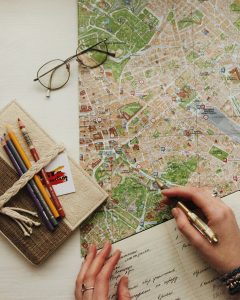
For your writing journey, an outline can help you answer similar questions: which concept do you want to discuss first? How will you travel between different concepts? How much will you write about each concept?
Your outline helps you plan and structure what you want to say and in what order you will say it. As your ideas develop, you may adjust your outline so that it better fits with the concepts you want to connect and the evidence you will use to support your ideas.
You can follow this KPU learning aid to learn more about structuring your outline.
Using our example writing assignment, I can get started on my outline.
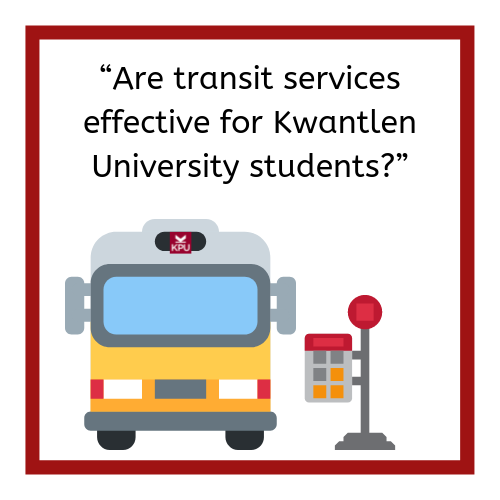
I’ll group ideas and concepts into paragraphs:
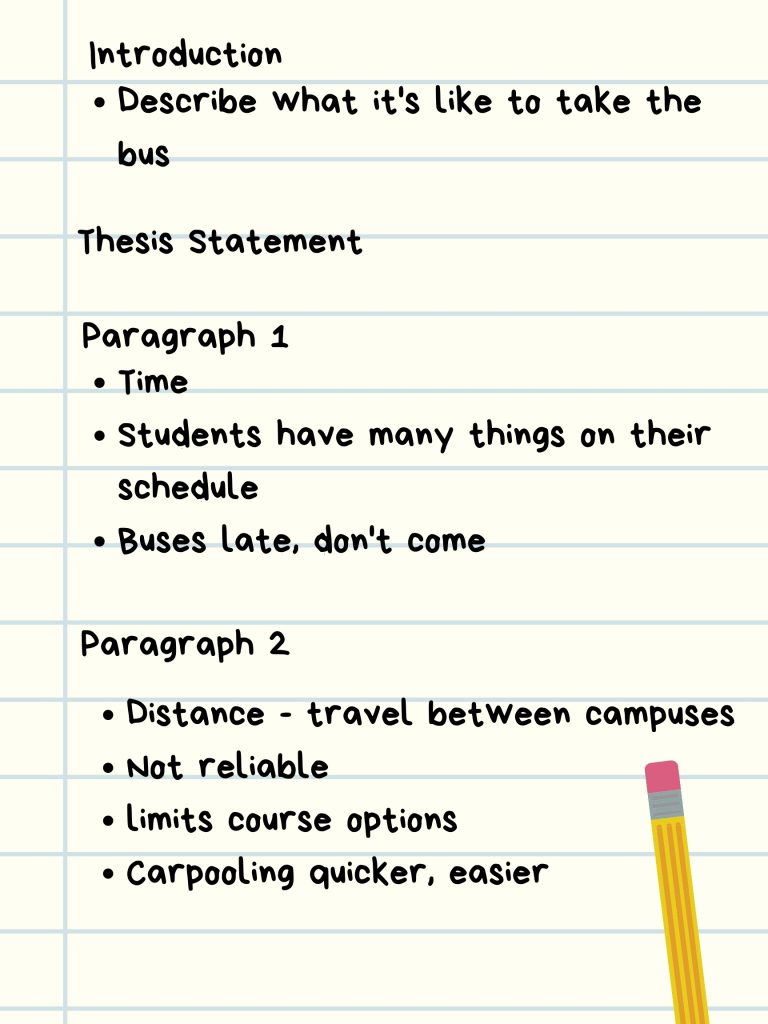
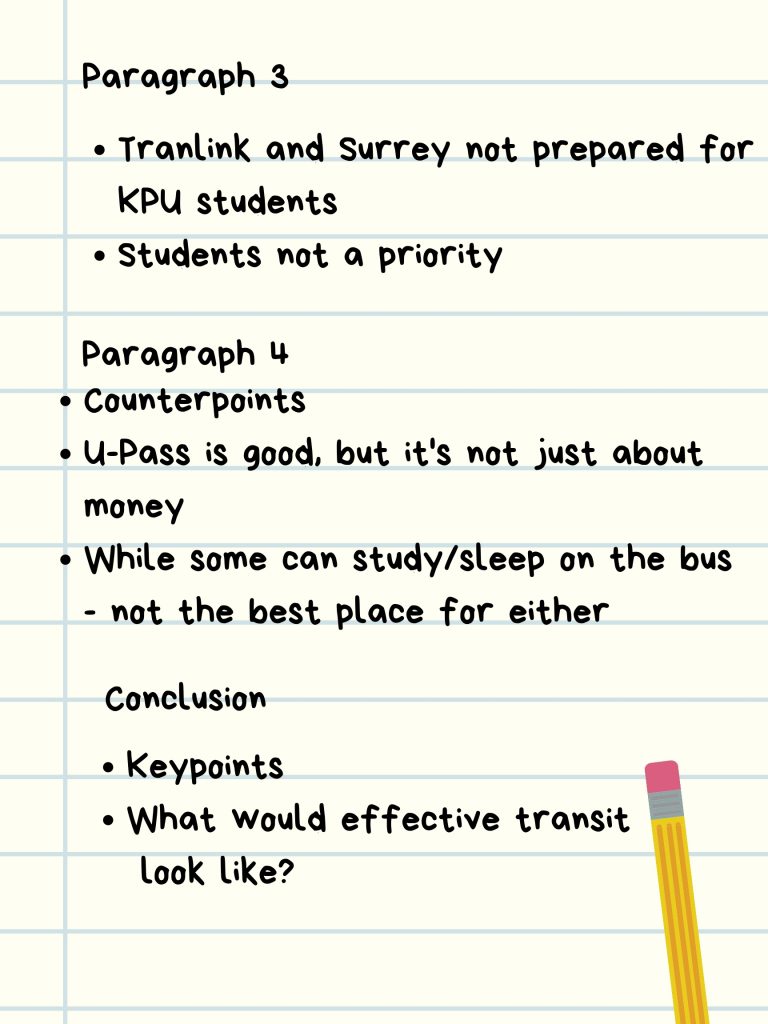
Right now, I haven’t written my thesis statement, but that will be my next step.
If you are an intermediate or an experienced academic writer, you might want to try creative graphic approaches to outlining.


Below you can see an example of using text and drawing to organize key ideas and assess options when putting together a project.
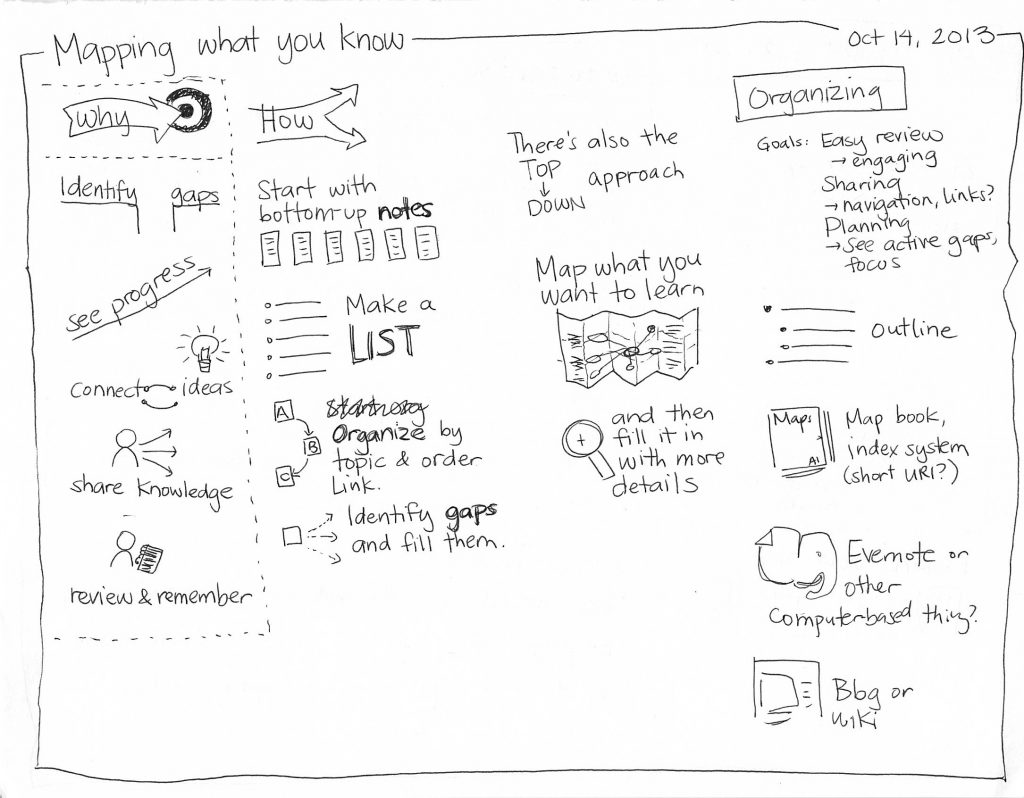
Image Descriptions:
Figure 1 image description: The first image shows a sample research paper outline. Because the outline is big, the image has two parts. Figure 1 is the first part which shows the introduction and the first two body paragraphs in bullet points. The background imitates a notebook sheet.
Figure 2 image description: Figure 2 is the second half of the research paper outline sample, including the third and fourth body paragraphs and the conclusion. Like Figure 1, this outline is written in bullet points with a notebook sheet background.
Figure 3 image description: Figure 3 shows an outlined map of the assignment. It shows what the student knows and what it needs to be done. It is handwritten, and the text is spread out to show how it would look in reality.

